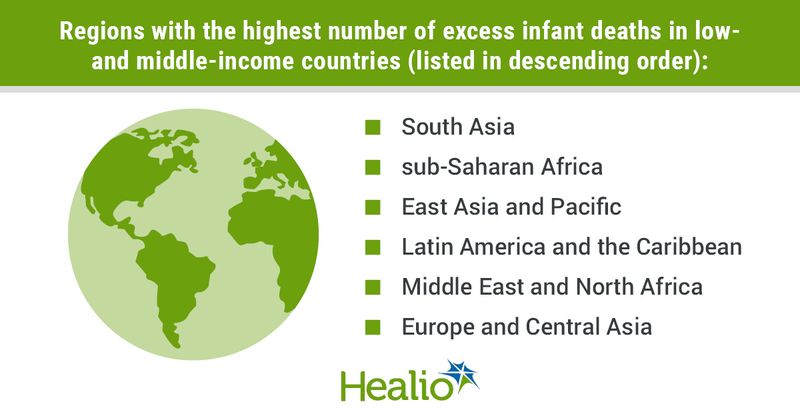267K more babies died than expected in 2020, worldwide study shows
Click Here to Manage Email Alerts
Researchers estimated that more than 267,000 infants in low- and middle-income countries died in 2020 as a result of the economic downturn caused by the COVID-19 pandemic.
“We expected a substantial increase in mortality,” Gil Shapira, PhD, an economist at the World Bank, told Healio Primary Care. “However, we didn’t enter the project with a specific expectation.”

The actual number of excess infant deaths may be even higher, he said.

Shapira and colleagues linked gross domestic product per capita data to 5.2 million previous birth histories in 128 low- and middle-income countries between 1985 and 2017. They then used growth projections from the International Monetary Fund World Economic Outlook to estimate the impact of the economic downturn in 2020 on infant mortality.
The findings, published in BMJ Open, showed that there were an estimated 267,208 excess infant deaths in the 12 months following the start of the pandemic, 6.8% higher than the estimated number of expected infant deaths. Broken down by geographic area, the researchers projected that most of these deaths occurred in South Asia (113,141 additional casualties), followed by sub-Saharan Africa (82,239 additional casualties), the eastern Asia and Pacific region (32,537 additional casualties), Latin America and the Caribbean (17,202 additional casualties), the Middle East and North Africa (14,127 additional casualties) and Europe and Central Asia (7,962 additional casualties).
According to the researchers, these excess deaths are solely attributed to the economic effects of the COVID-19 pandemic, “even though some countries have also experienced other shocks, such as natural disasters or political crises.” They also noted that it is difficult to compare their findings with previous studies that explored the impact of health system disruptions on excess mortality. Even so, their estimate aligns with projections from a study that was published in the Lancet Global Health in July 2020 and cited by WHO in a press conference.
“It is important to note that we only focus on one cause of excess deaths during the pandemic in low‐to‐middle income countries,” Shapira said. “We expect that the overall excess mortality is even higher than what we estimate solely based on forecasted declines in economic growth.”
The study is the latest to illustrate the toll of the COVID-19 pandemic. Provisional data from the CDC showed a 1.5-year decline in life expectancy from 2019 to 2020, and data released last week revealed higher rates of excess mortality in underrepresented populations. Other recent reports have indicated that there were up to 9,019 excess deaths among patients on dialysis, and as many as 1,403 excess deaths among kidney transplant recipients between February 2020 and August 2020. In addition, the National Cancer Institute projected that there will be nearly 10,000 additional deaths from breast cancer and colorectal cancer over the next decade due to the COVID-19 pandemic.
Shapira said that he hopes the new data underscore the urgency of allocating efforts and resources to tackle the downstream effects of the pandemic.
“There is a need to address the sources of the pandemic’s indirect mortality by strengthening social safety nets and assuring continuity of life‐saving health services,” he said.
